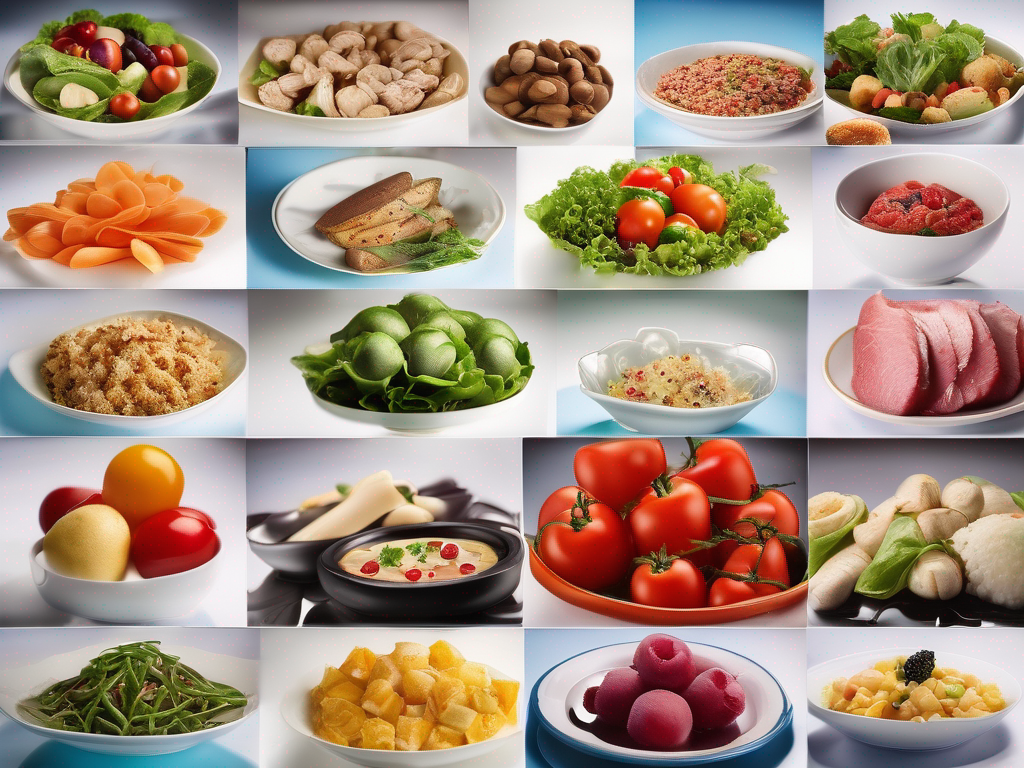
Ensuring Food Safety and Storage: A Comprehensive Guide
Ensuring Food Safety and Storage: A Comprehensive Guide
In today's fast-paced world, it's crucial to prioritize food safety and proper storage practices to prevent foodborne illnesses and food spoilage. Whether you're a professional chef, a home cook, or simply someone who enjoys preparing meals, understanding the importance of food safety is essential. In this guide, we'll explore the best practices for food safety and storage to help you maintain the quality and integrity of your food.
Food Storage Essentials
Products that help you store and preserve your food better
Disclosure: As an Amazon Associate, we earn from qualifying purchases. This helps support our site and allows us to continue providing free food safety information.
Importance of Food Safety
Food safety is paramount to protecting yourself and others from harmful bacteria, viruses, and parasites that can cause foodborne illnesses. By following proper food safety practices, you can minimize the risk of contamination and ensure that the food you prepare is safe to eat.
Key Principles of Food Safety
- Cleanliness: Always wash your hands, utensils, and surfaces before and after handling food to prevent cross-contamination.
- Separation: Keep raw meats separate from ready-to-eat foods to avoid the spread of bacteria.
- Cooking Temperatures: Cook food to the recommended internal temperatures to kill harmful pathogens.
- Chilling: Refrigerate perishable foods promptly to slow down the growth of bacteria.
Proper Food Storage Techniques
Proper food storage is essential to maintaining the quality and safety of your food. By following these guidelines, you can extend the shelf life of your ingredients and reduce food waste.
Refrigeration
- Keep your refrigerator temperature at or below 40°F (4°C) to slow the growth of bacteria.
- Store raw meats on the bottom shelf to prevent drips from contaminating other foods.
- Use airtight containers or plastic wrap to seal leftovers and prevent odors from spreading.
Freezing
- Freeze foods at 0°F (-18°C) or below to maintain their quality.
- Label and date items before placing them in the freezer to track their freshness.
- Use freezer-safe containers or bags to prevent freezer burn.
Pantry Storage
- Keep dry goods like grains, beans, and pasta in airtight containers to protect them from pests.
- Store canned goods in a cool, dark place away from heat sources.
- Rotate your pantry items regularly to use older items first.
Common Food Storage Mistakes to Avoid
Recommended Food Storage Products
Keep your food fresh and organized with these storage solutions
Disclosure: As an Amazon Associate, we earn from qualifying purchases. This helps support our site and allows us to continue providing free food safety information.
Even with the best intentions, it's easy to make mistakes when storing food. By being aware of these common pitfalls, you can ensure that your food stays safe and fresh for longer.
Mistakes to Avoid
- **Leaving leftovers out at room temperature for too long.
- **Overfilling your refrigerator, which can prevent proper air circulation.
- **Storing produce and meats together in the same drawer, leading to cross-contamination.
- **Keeping foods past their expiration dates, risking spoilage and foodborne illness.
Tips for Safe Food Handling
Proper food handling practices are crucial to preventing foodborne illnesses. By following these tips, you can minimize the risk of contamination and ensure the safety of the food you prepare.
Safe Handling Tips
- Thaw frozen foods in the refrigerator, microwave, or cold water, never at room temperature.
- Use separate cutting boards for raw meats and produce to avoid cross-contamination.
- Wash fruits and vegetables thoroughly under running water before consuming or cooking.
- Avoid using expired or damaged cans and packages, as they may be contaminated.
Conclusion
In conclusion, prioritizing food safety and proper storage techniques is essential for maintaining the quality and safety of the food you consume. By following the guidelines outlined in this comprehensive guide, you can reduce the risk of foodborne illnesses, extend the shelf life of your ingredients, and minimize food waste. Remember, when it comes to food safety, prevention is key. Stay informed, stay vigilant, and enjoy your meals with peace of mind.
Food Storage Essentials We Love
Products that help you store and preserve your food better
Disclosure: As an Amazon Associate, we earn from qualifying purchases. This helps support our site and allows us to continue providing free food safety information.
Scan your food directly and get instant safety info using our AI-powered camera feature.




